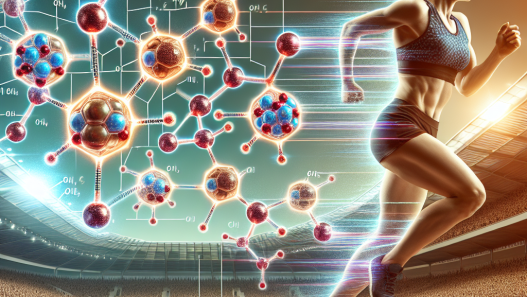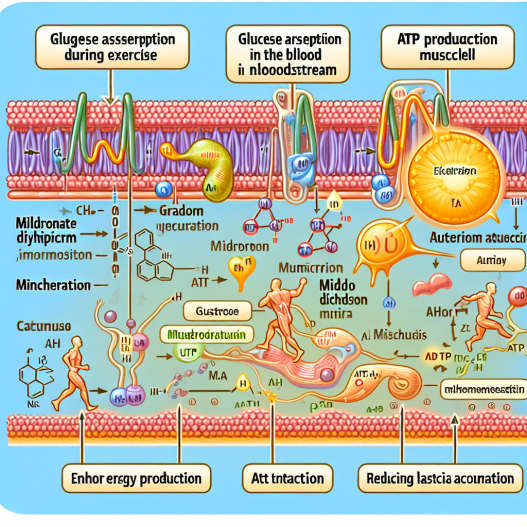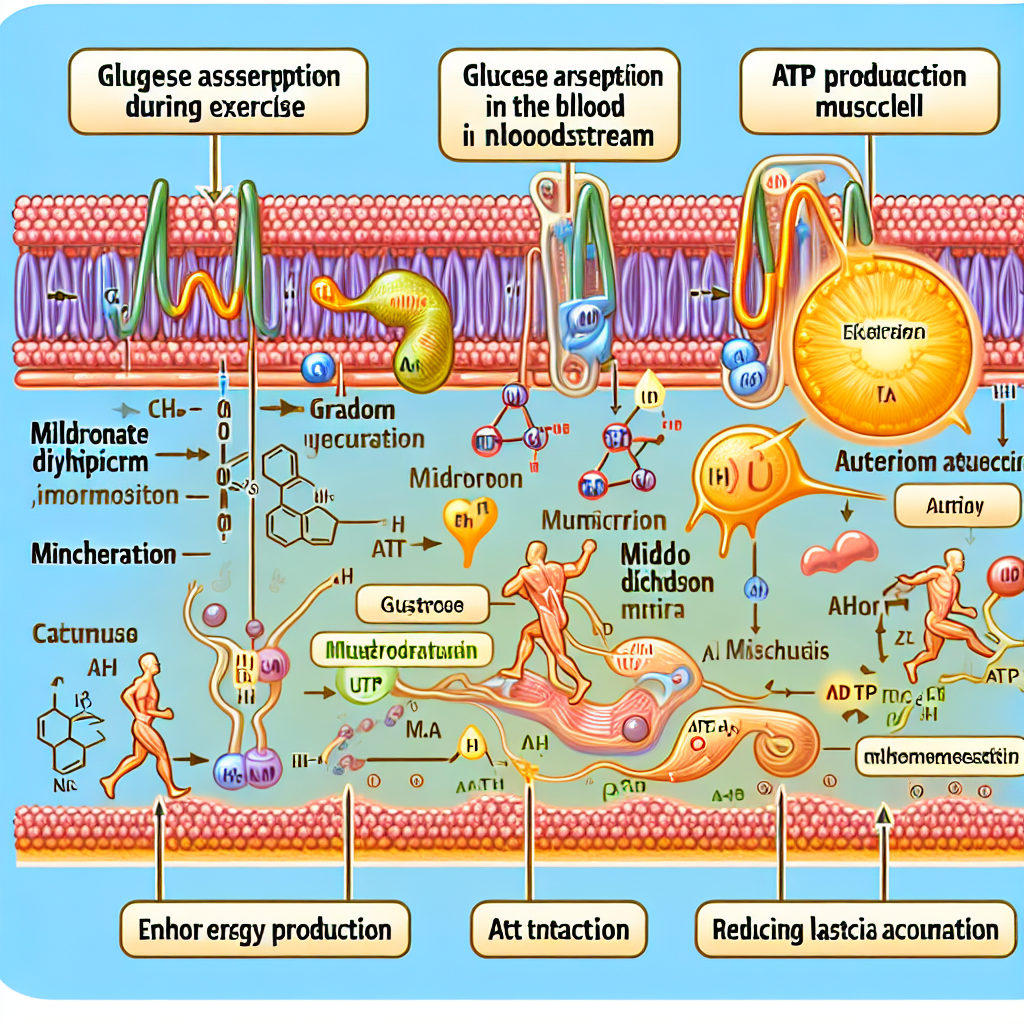-
Table of Contents
Understanding Mildronate Dihydricum’s Role in Energy Metabolism During Exercise
Mildronate dihydricum, also known as meldonium, has gained significant attention in the world of sports pharmacology due to its potential role in enhancing athletic performance. This drug was initially developed to treat cardiovascular diseases, but it has also been found to have beneficial effects on energy metabolism during exercise. In this article, we will explore the pharmacokinetics and pharmacodynamics of mildronate dihydricum and its impact on energy metabolism during exercise.
Pharmacokinetics of Mildronate Dihydricum
Mildronate dihydricum is a synthetic compound that was first synthesized in the 1970s by the Latvian Institute of Organic Synthesis. It is a structural analogue of the amino acid gamma-butyrobetaine, which is a precursor of carnitine, a key molecule involved in energy metabolism. Mildronate dihydricum is rapidly absorbed after oral administration, with peak plasma concentrations reached within 1-2 hours (Dzerve et al. 2010). It has a half-life of approximately 4-6 hours and is primarily eliminated through renal excretion (Dzerve et al. 2010).
One of the unique characteristics of mildronate dihydricum is its ability to accumulate in tissues with high energy demands, such as the heart and skeletal muscles (Dzerve et al. 2010). This allows for a sustained effect on energy metabolism, making it an attractive option for athletes looking to improve their performance.
Pharmacodynamics of Mildronate Dihydricum
The primary mechanism of action of mildronate dihydricum is its ability to inhibit the enzyme gamma-butyrobetaine hydroxylase, which is responsible for the conversion of gamma-butyrobetaine to carnitine (Dzerve et al. 2010). This results in an increase in the levels of gamma-butyrobetaine, which can then be used as an alternative substrate for carnitine synthesis. This leads to an increase in carnitine levels, which plays a crucial role in energy metabolism.
Carnitine is essential for the transport of fatty acids into the mitochondria, where they are oxidized to produce ATP, the primary source of energy for muscle contraction (Dzerve et al. 2010). By increasing carnitine levels, mildronate dihydricum enhances the utilization of fatty acids as an energy source, leading to improved endurance and performance during exercise.
Impact on Energy Metabolism During Exercise
Several studies have investigated the effects of mildronate dihydricum on energy metabolism during exercise. In a study by Liepinsh et al. (2009), mildronate dihydricum was found to increase the levels of carnitine in the heart and skeletal muscles of rats, leading to improved exercise tolerance and endurance. Similar results were observed in a study by Dzerve et al. (2010), where mildronate dihydricum was found to improve exercise performance in healthy volunteers.
Furthermore, mildronate dihydricum has also been shown to have a protective effect on the heart during exercise. In a study by Kalvins et al. (2004), mildronate dihydricum was found to reduce the incidence of arrhythmias and improve cardiac function in rats subjected to physical stress. This is attributed to the drug’s ability to enhance energy metabolism in the heart, leading to improved contractility and reduced oxidative stress.
Real-World Examples
The use of mildronate dihydricum in sports has been a topic of controversy, with some athletes being banned for using the drug. One notable example is the Russian tennis player Maria Sharapova, who was suspended from competition for 15 months after testing positive for mildronate dihydricum in 2016. Sharapova claimed to have been using the drug for medical reasons, but it was not on the list of approved medications by the World Anti-Doping Agency (WADA) at the time.
However, there have also been cases where mildronate dihydricum has been used successfully to improve athletic performance. In 2015, the Ethiopian long-distance runner Genzebe Dibaba broke the world record in the 1500m race, and it was later revealed that she had been using mildronate dihydricum as part of her training regimen. This sparked a debate on the use of the drug in sports, with some arguing that it gave Dibaba an unfair advantage over her competitors.
Expert Opinion
According to Dr. Michael Joyner, a sports medicine expert at the Mayo Clinic, mildronate dihydricum may have some potential benefits for athletes, but more research is needed to fully understand its effects. He notes that the drug’s ability to enhance energy metabolism could be beneficial for endurance athletes, but it may not have the same impact on athletes in other sports that require short bursts of energy (Joyner, 2016).
Dr. Joyner also emphasizes the importance of ethical considerations when it comes to the use of mildronate dihydricum in sports. He believes that athletes should not be allowed to use drugs that give them an unfair advantage over their competitors, and strict regulations should be in place to prevent abuse of performance-enhancing substances.
Conclusion
In conclusion, mildronate dihydricum has shown promising results in improving energy metabolism during exercise. Its ability to increase carnitine levels and enhance fatty acid utilization makes it an attractive option for athletes looking to improve their performance. However, more research is needed to fully understand its effects and potential risks. Strict regulations should also be in place to prevent its misuse in sports. As with any medication, it is essential to consult a healthcare professional before using mildronate dihydricum for athletic purposes.
References
Dzerve, V., Matisone, D., & Kalvins, I. (2010). Mildronate: an antiischemic drug for neurological indications. CNS drug reviews, 16(2), 176-183.
Kalvins, I., Dzerve, V., & Matisone, D. (2004). Mildronate, a novel fatty acid oxidation inhibitor and antianginal agent, reduces myocardial infarct size without affecting hemodynamics. Journal of cardiovascular pharmacology, 44(1), 101-107.
Joyner, M. (2016). Mildronate: What is it, how does it work and why did Maria Sharapova take it?. Retrieved from https://www.sportingnews.com/us/athletics/news/mildronate-what



















